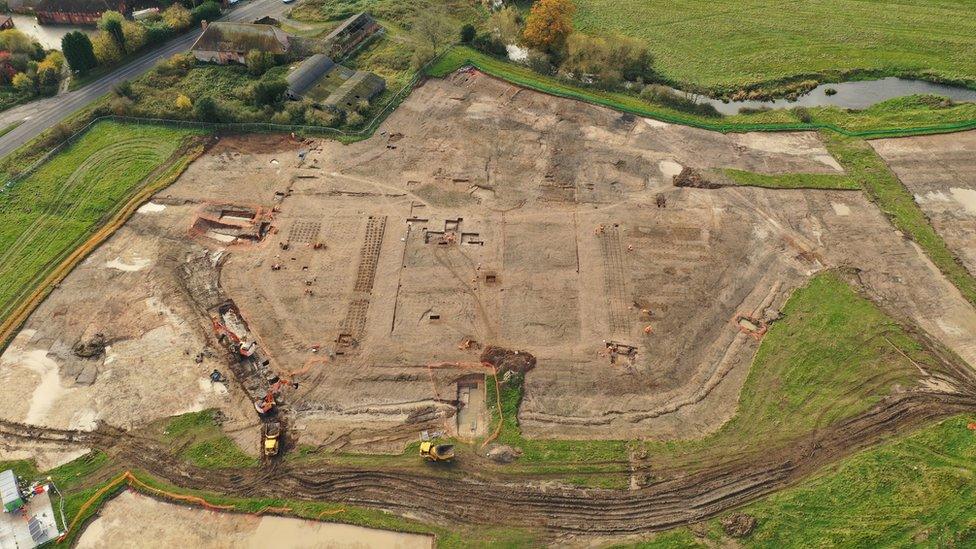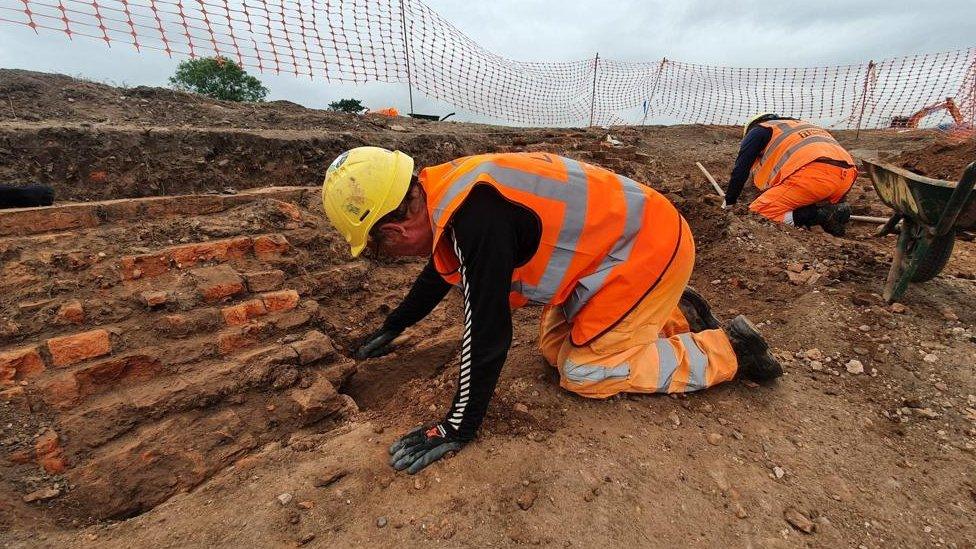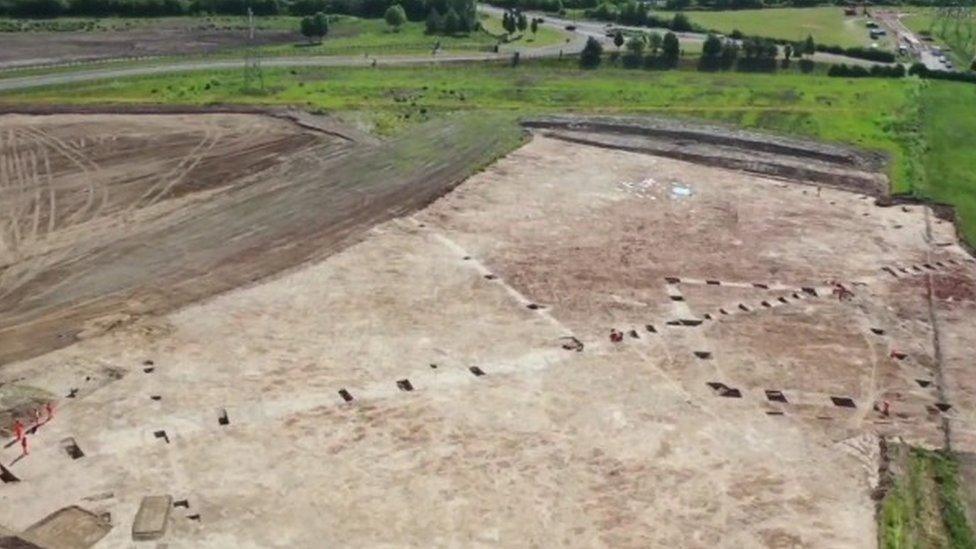HS2 dig finds 16th Century gardens in Warwickshire
- Published

Aerial photography first picked up the shape of what was once Coleshill Manor and an octagonal moat
One of the best preserved ornamental gardens from the 16th Century has been found at an HS2 high-speed rail site, archaeologists said.
Once-sprawling flowerbeds and gravel paths have been uncovered at Coleshill, Warwickshire.
The huge formal gardens are thought to have been built by Sir Robert Digby to show off his wealth and status.
Experts said they compared to similar gardens at Hampton Court and Kenilworth Castle.
The shape of what was once Coleshill Manor and an octagonal moat were originally picked up by aerial photography during a site assessment of the rail route.

Archaeologists have spent two years working to reveal the large gardens along with the manor house
They are to the east of the Birmingham section of the high-speed line which is set to link the city to London and then Manchester and Leeds.
Excavations revealed the manor house and large gardens, measuring 300m (984ft) from end to end, which date from the decades either side of 1600.
Wessex Archaeology carried out the dig over the past two years and project officer Stuart Pierson said it was a "once in a career opportunity" to work on it.
"Evidence of expansive formal gardens of national significance and hints of connections to Elizabeth I and the [English] Civil War provide us with a fascinating insight into the importance of Coleshill and its surrounding landscape," he said.
"We have also uncovered structures such as pavilions and some exceptional artefacts including smoking pipes, coins and musket balls, giving us an insight into the lives of people who lived here."

Pottery along with smoking pipes, coins and musket balls was also unearthed by the team of archaeologists
Dr Paul Stamper, a specialist in English gardens, described the preservation of the remains as "exceptional".
"There have only been three or four investigations of gardens of this scale over the last 30 years, including Hampton Court, Kirby in Northamptonshire and Kenilworth Castle, but this one was entirely unknown," he said.
"The garden does not appear in historical records, there are no plans of it, it is not mentioned in any letters or visitors' accounts."

Follow BBC West Midlands on Facebook, external, Twitter, external and Instagram, external. Send your story ideas to: newsonline.westmidlands@bbc.co.uk , external
Related topics
- Published19 June 2020

- Published10 March 2020
